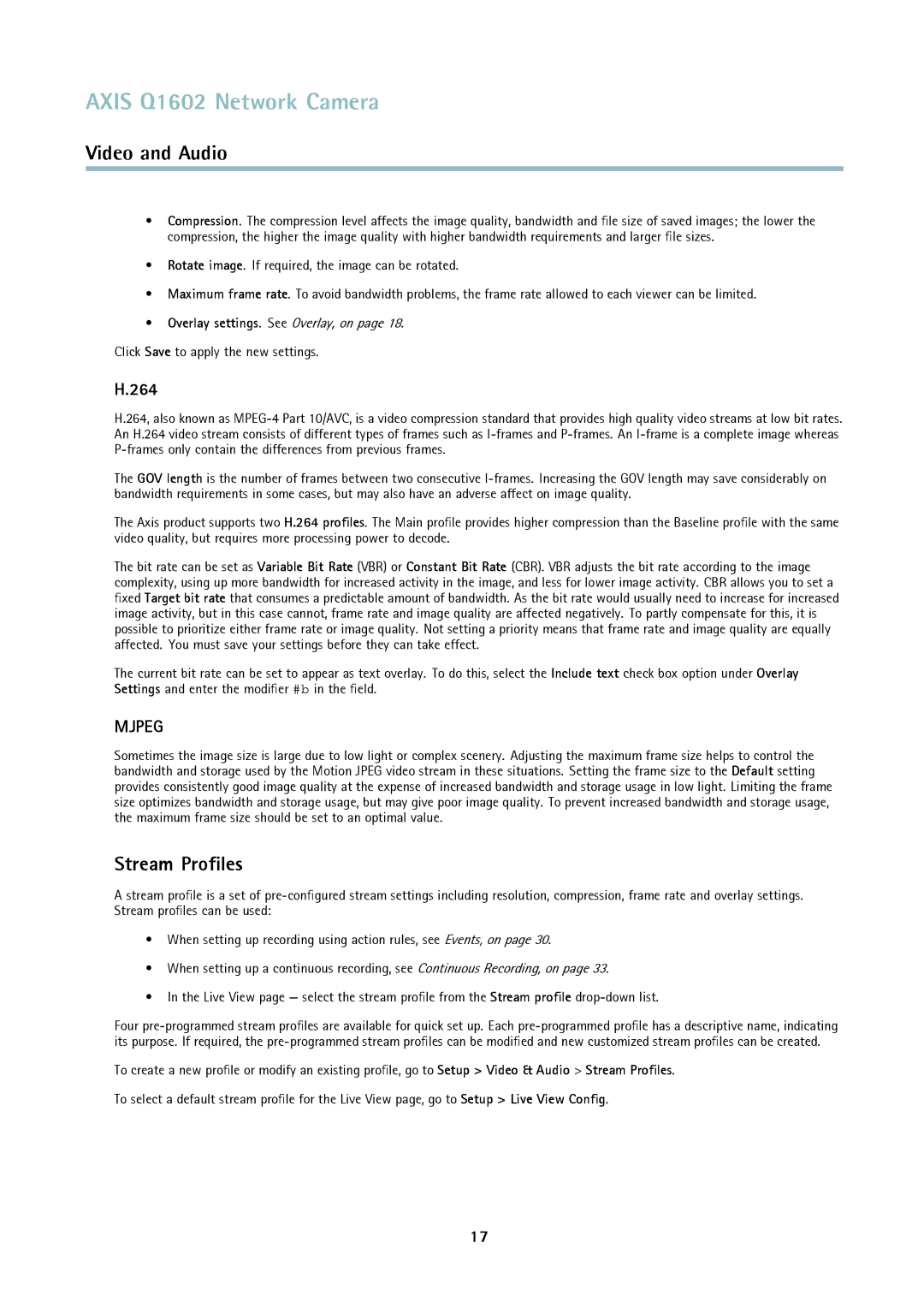AXIS Q1602 Network Camera
Video and Audio
•Compression. The compression level affects the image quality, bandwidth and file size of saved images; the lower the compression, the higher the image quality with higher bandwidth requirements and larger file sizes.
•Rotate image. If required, the image can be rotated.
•Maximum frame rate. To avoid bandwidth problems, the frame rate allowed to each viewer can be limited.
•Overlay settings. See Overlay, on page 18.
Click Save to apply the new settings.
H.264
H.264, also known as
The GOV length is the number of frames between two consecutive
The Axis product supports two H.264 profiles. The Main profile provides higher compression than the Baseline profile with the same video quality, but requires more processing power to decode.
The bit rate can be set as Variable Bit Rate (VBR) or Constant Bit Rate (CBR). VBR adjusts the bit rate according to the image complexity, using up more bandwidth for increased activity in the image, and less for lower image activity. CBR allows you to set a fixed Target bit rate that consumes a predictable amount of bandwidth. As the bit rate would usually need to increase for increased image activity, but in this case cannot, frame rate and image quality are affected negatively. To partly compensate for this, it is possible to prioritize either frame rate or image quality. Not setting a priority means that frame rate and image quality are equally affected. You must save your settings before they can take effect.
The current bit rate can be set to appear as text overlay. To do this, select the Include text check box option under Overlay Settings and enter the modifier #b in the field.
MJPEG
Sometimes the image size is large due to low light or complex scenery. Adjusting the maximum frame size helps to control the bandwidth and storage used by the Motion JPEG video stream in these situations. Setting the frame size to the Default setting provides consistently good image quality at the expense of increased bandwidth and storage usage in low light. Limiting the frame size optimizes bandwidth and storage usage, but may give poor image quality. To prevent increased bandwidth and storage usage, the maximum frame size should be set to an optimal value.
Stream Profiles
Astream profile is a set of
•When setting up recording using action rules, see Events, on page 30.
•When setting up a continuous recording, see Continuous Recording, on page 33.
•In the Live View page — select the stream profile from the Stream profile
Four
To create a new profile or modify an existing profile, go to Setup > Video & Audio > Stream Profiles.
To select a default stream profile for the Live View page, go to Setup > Live View Config.
17
